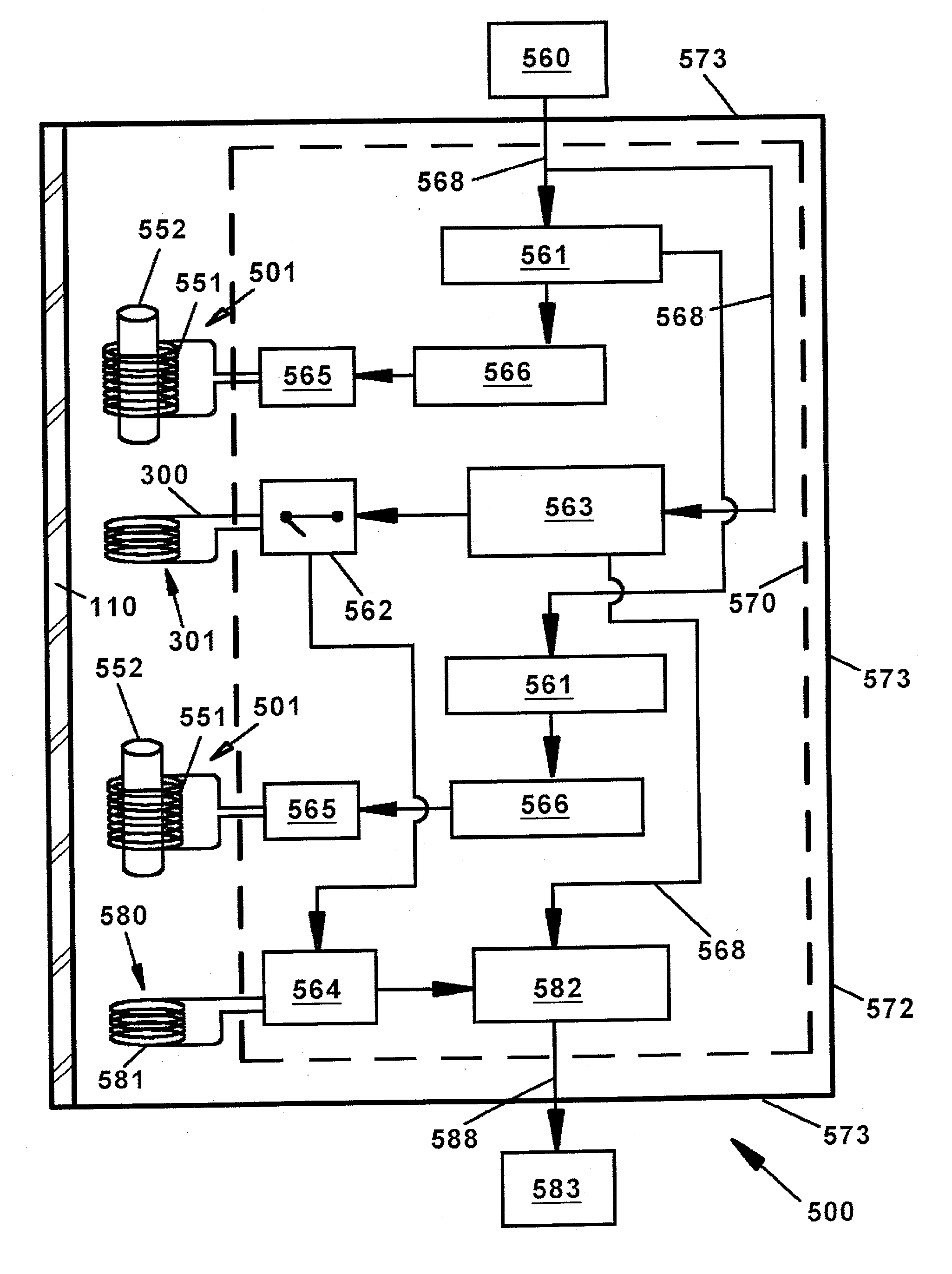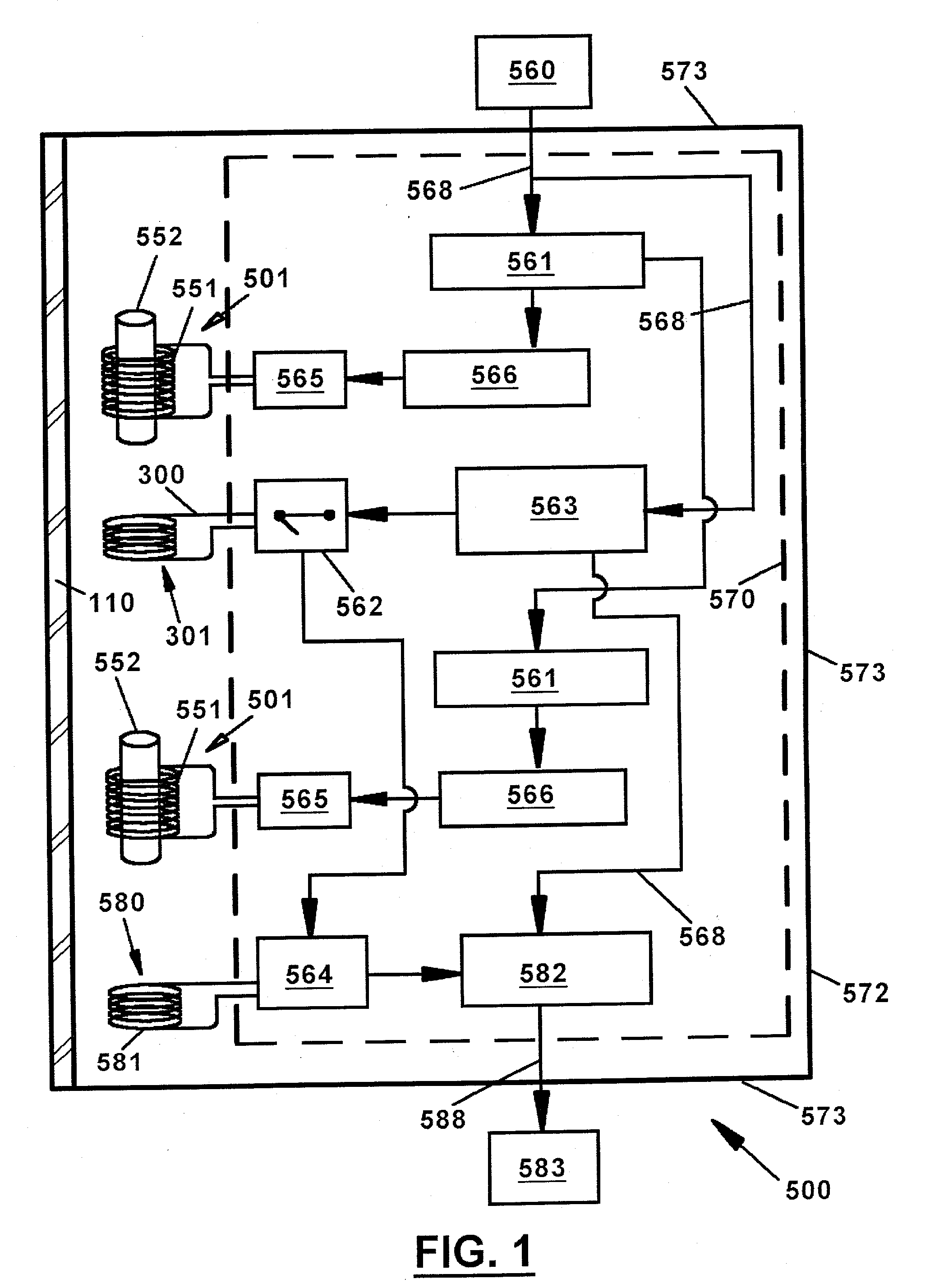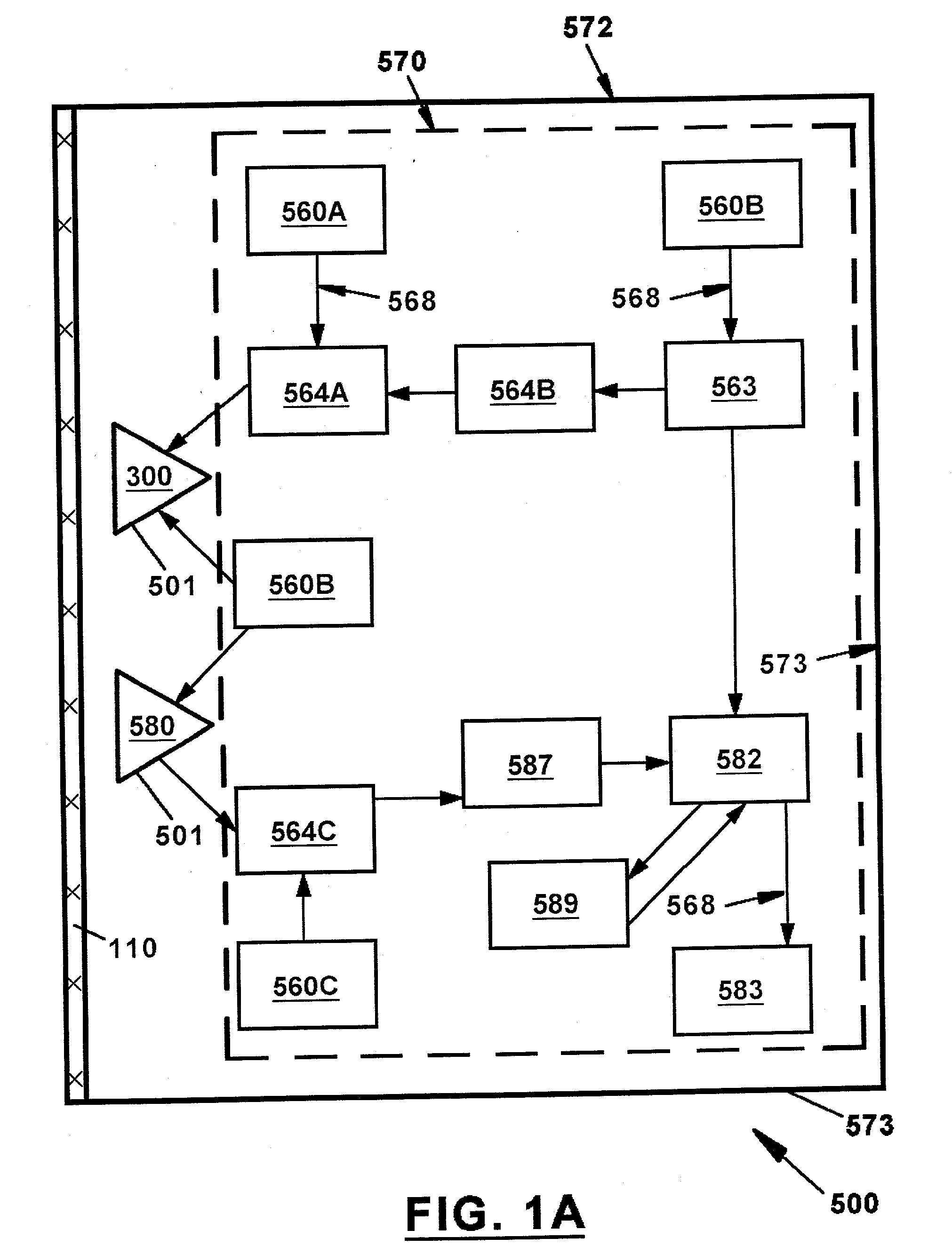[0009] This invention pertains to a method and apparatus for measuring the subterranean
lithology using Electromagnetic energy. The invention is applicable to the measurement from within uncased boreholes, i.e., open-holes. Also combined within the invention is Magnetic Lenses.TM. focus and Magnetic Antenna.TM.
transmitter-
receptor. These facilitate the present invention achieving increased penetration of electromagnetic energy into the geologic formation from the borehole with
high resolution and the ability to control the direction in which the measurements are taken. The invention teaches a method and apparatus for concentrating
magnetic flux to retard the dissipation of energy penetrating through the ground formation. The invention utilizes the Magnetic Antenna
transmitter-
receptor and Magnetic Lensing focus that counter the rapid dissipation of electromagnetic energy.
[0011] The invention utilizes inductive magnetic
coupling. Accordingly, the detection apparatus does not need to be in physical contact with the ground or geologic formation. The invention utilizes inductive magnetic
coupling to measure the changes in resistivity within the geologic formation that
signal the presence of material having different electrical properties. The apparatus measures and records the electromagnetic properties of the geologic structure comprising the formation, e.g., limestone, granite, etc., and materials occupying the interstices of the geologic formation, e.g., water,
hydrocarbon, etc. The invention transmits magnetic flux into the formation. This provides information regarding the electrical resistivity and lossiness of the formation. This provides information regarding the constituent matter within the formation. The measurements may be taken at various depths or locations within the subsurface penetrated by the borehole by the transmission of oscillating magnetic flux. The apparatus can thereby measure and
record the location and amplitude of said resistivity in single or multiple directions, and at distances that facilitate locating
electrically conductive materials. Examples of materials of interest having low
conductivity are
hydrocarbon gases or liquids. The other common media located within the interstices of a geologic formation is water or
salt water. Water and particularly
salt water have significantly higher electrical
conductivity than hydrocarbons. Therefore measuring the electrical resistivity of geologic formations can provide reliable information regarding the substance located within a particular formation. The invention is not, however, limited to detection of
hydrocarbon and water. The fact that the invention does not require physical contact with the surface of the geologic formation greatly facilitates movement of the detection apparatus. It also minimizes the wear upon the detection apparatus housing and other components.
[0013] Each bistatic magnetic flux transmitter / receiver array incorporates one or more EM barriers. As used herein, an "EM barrier" or "barrier material" can be any
electrically conductive and magnetically permeable material such as
carbon steel. The combined components form a Magnetic Antenna.TM. transmitter-
receptor. The magnetic saturation flux generator, transmitter and receiver components are electrically insulated from the EM barrier. By partially saturating the EM barrier, an electrically conductive and magnetically permeable material, the EM barrier will more readily engage with higher frequency oscillating transmitter flux. By well-known electromotive forces, the oscillating magnetic flux induces eddy currents with the barrier. This separate oscillating
electromagnetic current generates a separate magnetic flux that is broadcast out of the barrier and into the geologic formation, thereby causing the EM barrier to be a magnetic antenna.
[0014] By controlling the quantity of the magnetic saturation flux of the magnetic saturation generator, the
relative permeability of the antenna can be controlled. As the permeability of barrier material comprising the antenna is lowered, more oscillating transmitter flux penetrates into the antenna, creating greater eddy currents and resulting in increased oscillating flux broadcast from the length of the antenna. Further, the lowered
relative permeability of the antenna alters the shape of the oscillating flux field generated by the eddy currents and transmitted out from the antenna. This allows the flux to be focused. By focusing the flux, an increased density of oscillating flux can be created at greater distances from the apparatus that otherwise has been previously possible. This counters the typical dispersion of flux as it is transmitted away from the antenna. It permits measurements being made at greater distances into the formation than previously achievable. The increased density of flux also increases the resolution of measured property. This focusing of the magnetic flux, with the resulting enhanced penetration into the formation and with high resolution, is termed Magnetic Lensing focus.
[0015] To enhance the reception of the separate magnetic flux ("receiver signals") induced within electrically conductive material existing with the area of the geologic formation targeted for measurement, a receiver is also located
proximate to the transmitter and magnetic saturation generator (a monostatic configuration) and, alternatively, with a separate magnetic saturation generator (a bistatic configuration).
 Login to View More
Login to View More  Login to View More
Login to View More 


